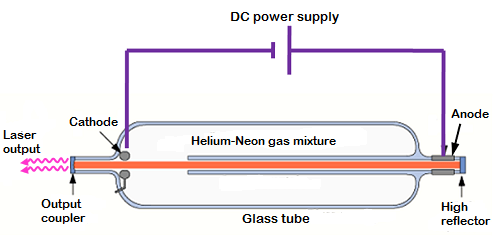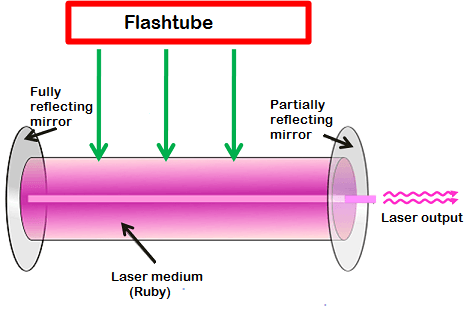Exploring Various Laser Sources and Their Applications:
The development of laser-cutting technology advancements has had a significant impact on modern society, with its applications spanning various industries and fields. Lasers have become an indispensable tool in scientific research, enabling researchers to study materials and processes with unprecedented precision and accuracy. In medicine, lasers are used in a wide range of procedures, from eye surgery to cancer treatment. In industry, lasers are used for material processing, cutting, welding, and drilling, among other applications. In military and defence applications, lasers are used for targeting, communications, and weapons systems.
The first working laser was created in 1960 by Theodore Maiman, using a ruby crystal as the laser medium. Since then, the technology has advanced rapidly, with new types of lasers developed and new applications discovered. Today, there are numerous types of lasers available, each with its unique characteristics and applications.
The importance of laser technology in modern society cannot be overstated, and it continues to be a driving force in scientific research, medical advancements, industrial productivity, and national defence.
In the following sections, we will explore the different types of laser sources and their applications in more detail.
A. Gas Lasers:

Gas lasers are a type of laser that uses gas as the laser medium, with the gas molecules excited by an electrical discharge to emit laser light. These lasers are typically larger and more powerful than other types of lasers and can emit a variety of wavelengths. The most common types of gas lasers include HeNe (Helium-Neon), CO2 (Carbon Dioxide), Argon, and Excimer lasers. HeNe lasers emit red light and are commonly used in scientific research, medical procedures, and barcode scanners. CO2 lasers emit infrared light and are used in material processing, cutting, and welding. Argon lasers emit blue-green light and are used in medical procedures, scientific research, and the semiconductor industry. Excimer lasers emit ultraviolet light and are used in eye surgery and semiconductor manufacturing.
B. Solid-State Lasers:

Solid-state lasers use a solid crystal or glass as the laser medium, with the active ions in the crystal or glass excited by an external energy source to emit laser light. These lasers are typically smaller and more efficient than gas lasers and emit a narrow range of wavelengths. Common types of solid-state lasers include Nd: YAG (Neodymium-doped Yttrium Aluminum Garnet), Ruby, Er: YAG (Erbium-doped Yttrium Aluminum Garnet), and Ti: sapphire lasers. Nd: YAG lasers are commonly used in material processing, medical procedures, and military applications. Ruby lasers emit red light and are used in scientific research and tattoo removal. Er: YAG lasers emit infrared light and are used in medical procedures such as dental surgery. Ti: sapphire lasers emit near-infrared light and are used in scientific research and spectroscopy.
C. Semiconductor Lasers:
Semiconductor lasers use a semiconductor material as the laser medium, with the electrical current passing through the semiconductor to excite the electrons and produce laser light. These lasers are typically small, efficient, and inexpensive and emit a narrow range of wavelengths. Common types of semiconductor lasers include Edge-emitting, VCSEL (Vertical-cavity Surface Emitting Laser), and Quantum Cascade lasers. Edge-emitting lasers emit light in a narrow beam and are used in telecommunications and laser printers. VCSELs emit a circular beam of light and are used in optical mice, barcode scanners, and optical storage devices. Quantum Cascade lasers emit mid-infrared light and are used in gas sensing and chemical analysis.
D. Fiber Lasers:
Fibre lasers use optical fibre as the laser medium, with the laser light produced by pumping the fibre with a high-power laser diode. These lasers are typically highly efficient and have a long service life. Common types of fibre lasers include single-mode and multi-mode fibre lasers. Single-mode fibre lasers emit a narrow beam of light and are used in material processing, scientific research, and telecommunications. Multi-mode fibre lasers emit a broader beam of light and are used in material processing and scientific research.
E. Free-electron lasers (FELs):
They are a relatively new type of laser source that operates by using a beam of electrons that is accelerated to high energies and then passed through a magnetic undulator. The motion of the electrons in the undulator causes them to emit coherent radiation in the form of laser light.
Unlike other types of lasers, FELs can operate over a wide range of wavelengths, from the far infrared to the X-ray region. This makes them useful for a wide range of scientific research applications, including materials science, biology, and physics.
In addition to scientific research, FELs also have potential applications in industrial manufacturing, particularly in the areas of micromachining and surface processing. FELs are capable of producing extremely high-power, high-energy laser pulses, which could be used to cut or shape materials with unprecedented precision and speed.
Finally, FELs also have potential military and defence applications, particularly in the areas of missile defence and communication. FELs could be used to develop high-powered lasers capable of destroying enemy missiles, as well as to develop advanced communication systems that are resistant to jamming and interference.
Comparison of Different Types of Laser Sources.
When comparing different types of laser sources, there are several factors to consider, including power output, efficiency, cost, size, wavelength range, and applications. The table below summarizes some of the key characteristics of the different types of lasers discussed above:
| Laser Type | Power Output | Efficiency | Cost | Size | Wavelength Range | Applications |
| Gas Lasers | Low to High | Moderate | Low | Large | Visible to IR | Scientific research, medical, industrial, military |
| Solid-State Lasers | Low to High | High | Moderate to High | Medium | Visible to IR | Material processing, medical, military, scientific research |
| Semiconductor Lasers | Low to Moderate | High | Low to Moderate | Small | Visible to IR | Telecommunications, barcode scanners, laser printers, optical storage |
| Fiber Lasers | Low to High | High | Moderate to High | Small | IR | Material processing, scientific research, telecommunications |
| Free-Electron Lasers | High | Moderate | High | Large | Far-infrared to X-ray | Scientific research, industrial, military |
To conclude:
Laser sources have become an essential tool in modern technology, with applications spanning various industries and fields. From scientific research to medical procedures, from industrial manufacturing to military defense, lasers have revolutionized the way we interact with and manipulate the world around us.
As laser technology continues to advance, we can expect to see new types of lasers and new applications emerging in the years to come. Whether it’s developing new materials, improving medical procedures, or advancing national defense, laser technology will undoubtedly play a critical role in shaping the future of our world.
If you plan to buy the best laser machines and sources, get them from the best Laser source manufacturers.
